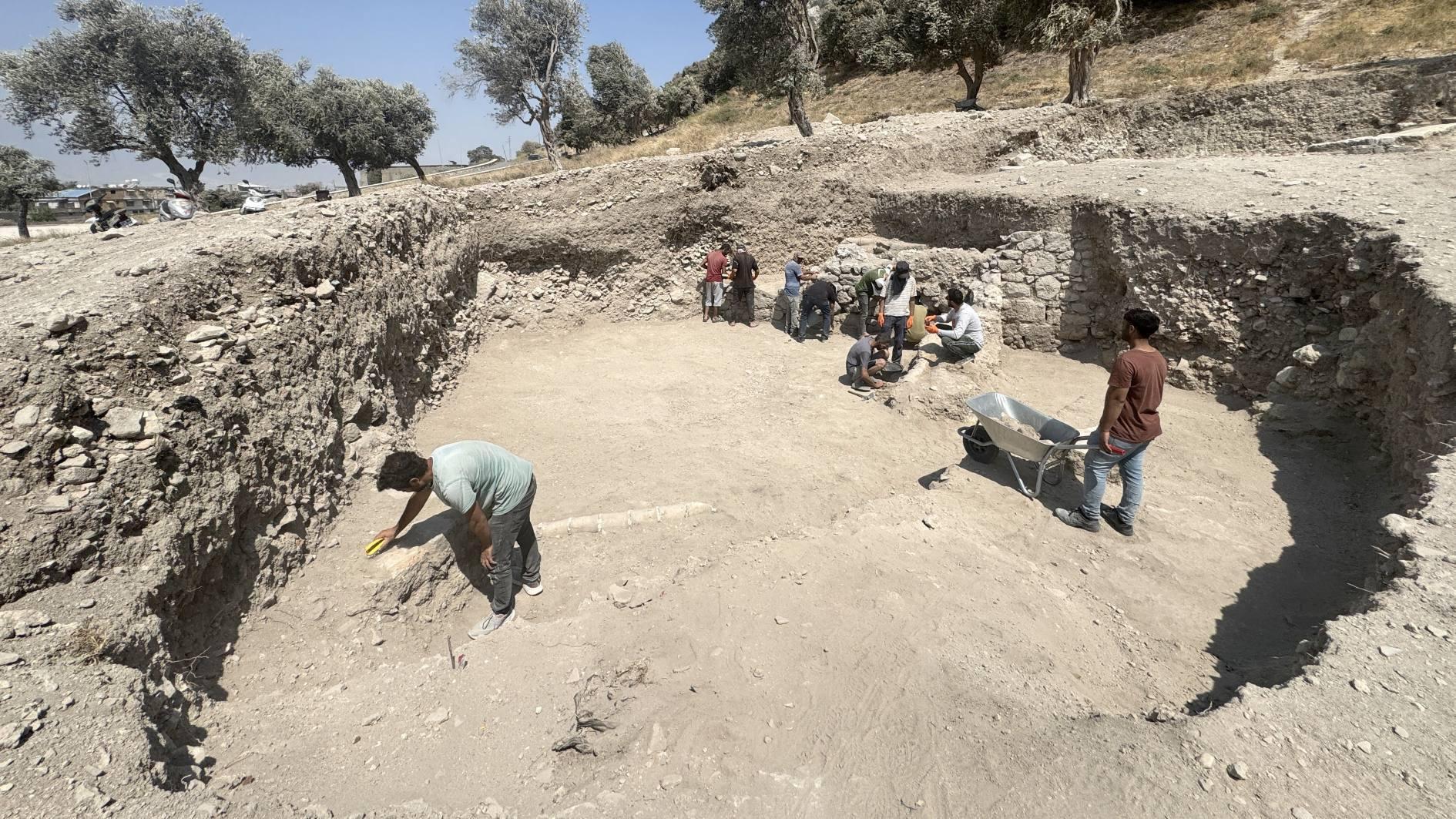
Rescue excavations in the ancient city of Antiocheia in the southern province of Hatay have unearthed remains that shed light on the commercial life of the region in the fourth and fifth centuries.
Located near the St. Pierre Church, a site considered a pilgrimage destination for Christians and recognized as one of the world’s earliest cave churches, the excavations are being carried out under the supervision of the Hatay Archaeology Museum.
The ongoing work on the western slope of the St. Pierre Church involves two archaeologists, two restorers and 13 workers. The team has uncovered shops dating back to the 4th and 5th centuries, along with numerous oil lamps, terracotta bottles and storage vessels.
Ali Ateş, acting director of the Hatay Archaeology Museum, told the state-run Anadolu Agency that excavations have been ongoing in the area since 2021.
He noted that earlier digs had revealed small artifacts, shops and clay pipes, adding that this year’s efforts are aimed at examining the functional relationship between the St. Pierre Church and surrounding structures.
Findings from the excavation show that the area was not only significant for faith tourism but also for trade, Ateş said.
“In our work, we saw that areas we previously identified as commercial shops continued in the same pattern. When we assess the small artifacts that surfaced, it becomes clear that the St. Pierre Church was hosting faith tourism even in the early Christian period,” he said.
Ateş emphasized that the excavations aim to highlight the church’s impact on the cultural and social life of the 4th and 5th centuries. He added that in the coming years, excavations will continue westward toward the Necmi Asfuroğlu Archaeology Museum.
“The findings confirm that this was both a commercial area and a religious center. In the early Christian era, the St. Pierre Church was not only an important site for faith tourism but also a hub for trade. The shops and the small artifacts uncovered there strengthen this thesis. The lamps, bottles and storage vessels prove that this was indeed a commercial zone,” Ateş added.
He also said that when the work is complete, the site will be transformed into an archaeopark to be integrated into tourism.